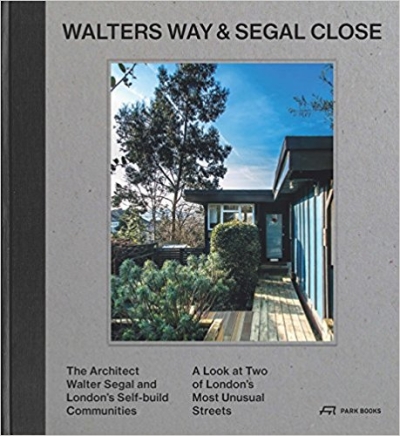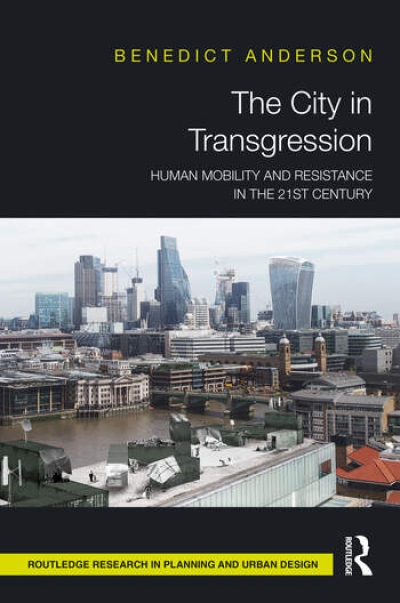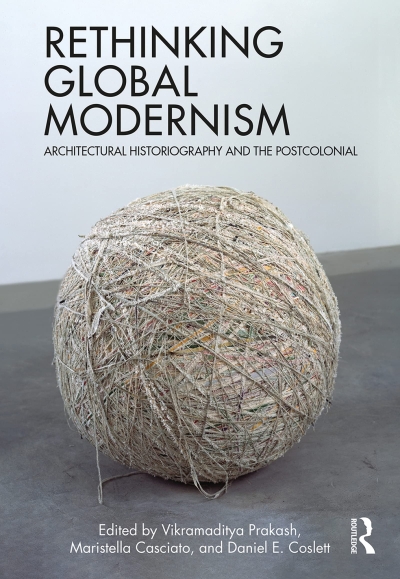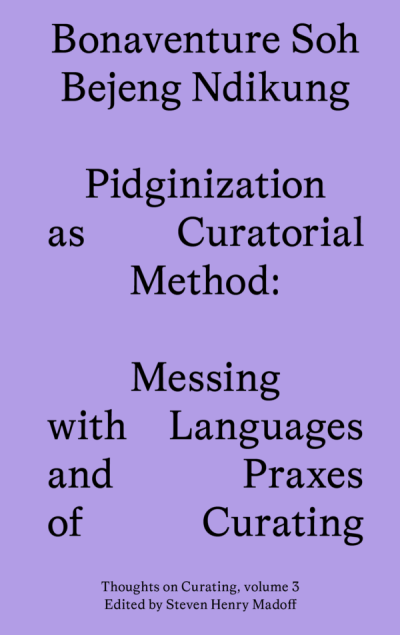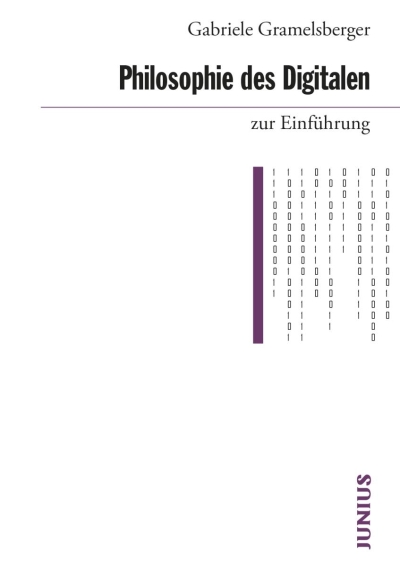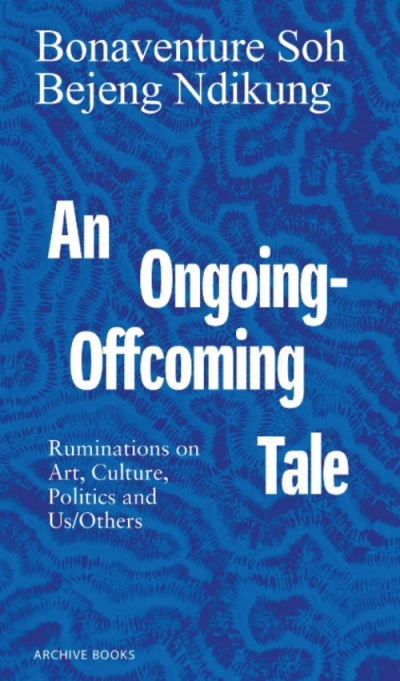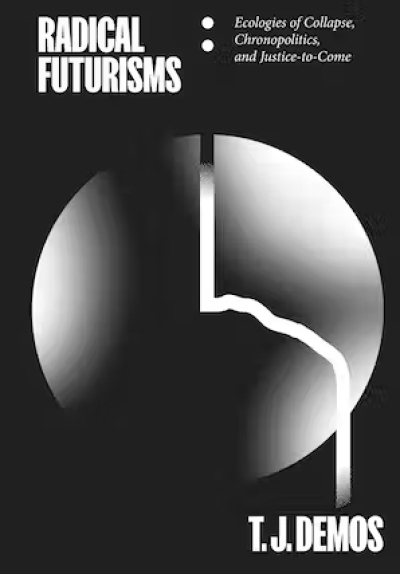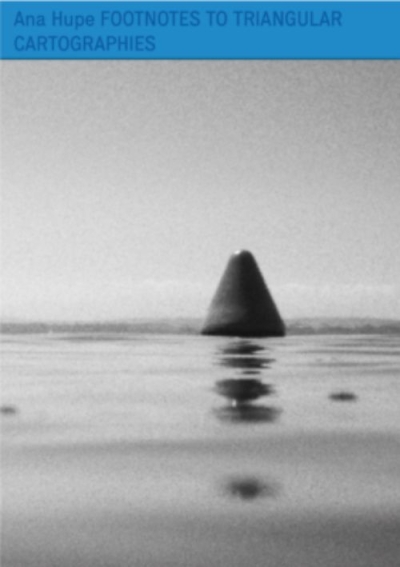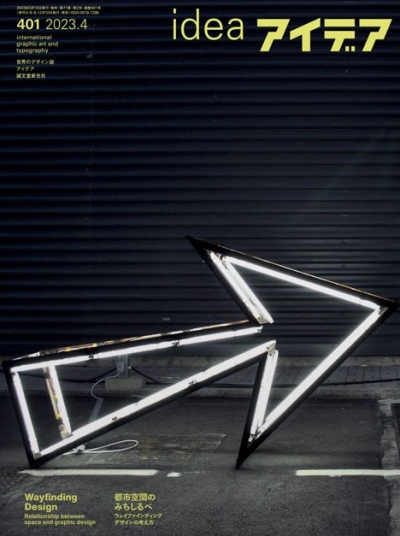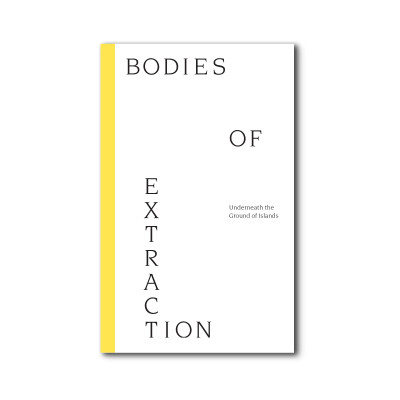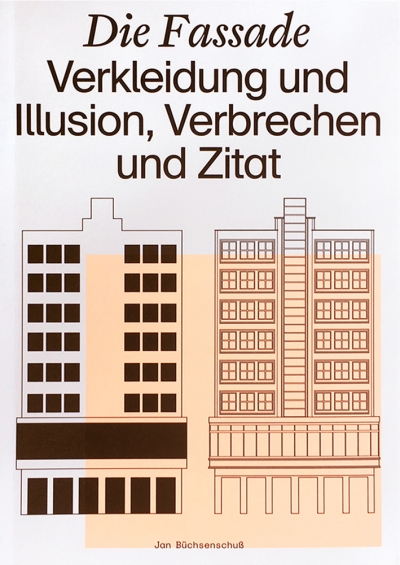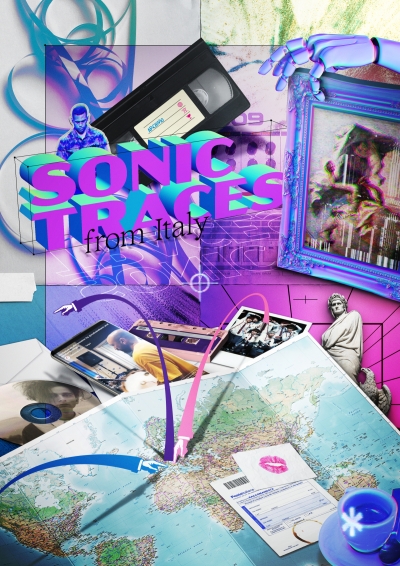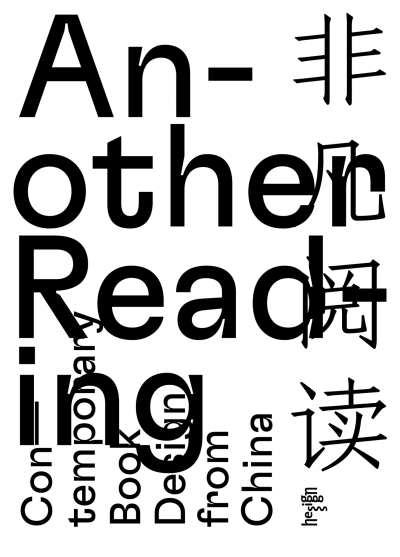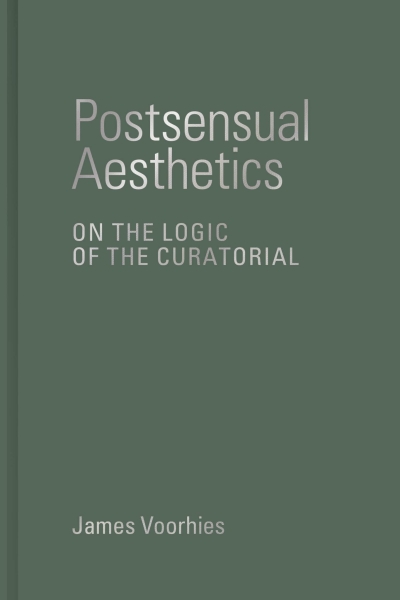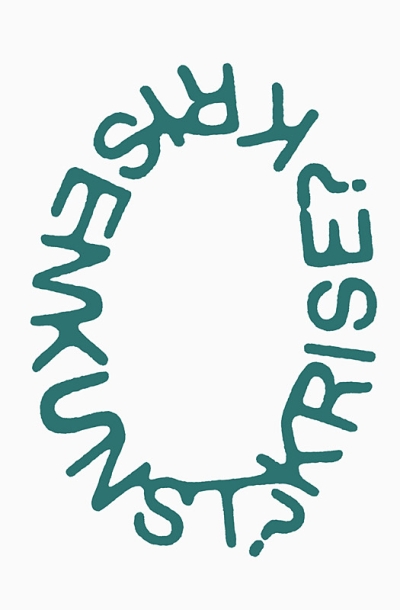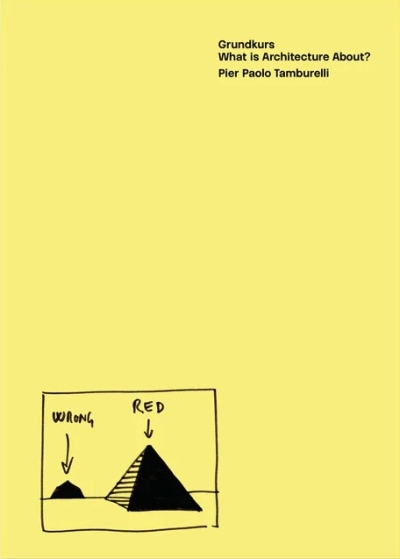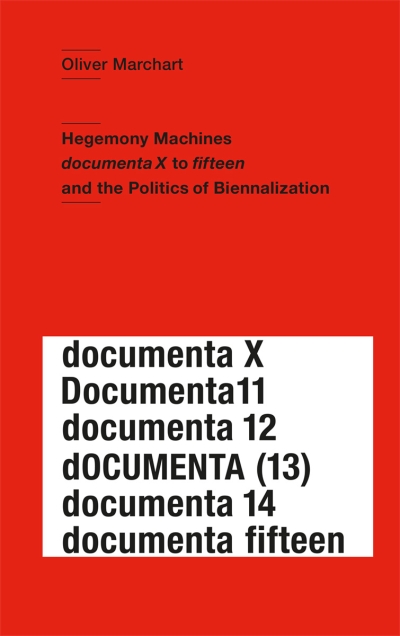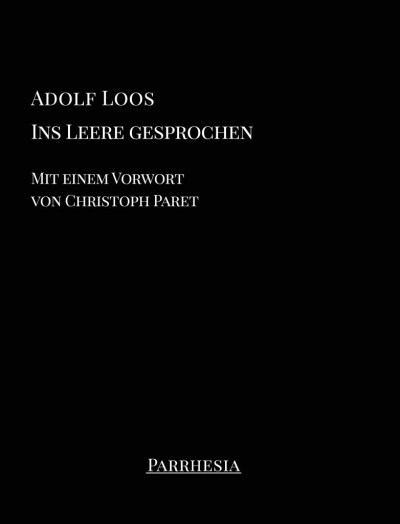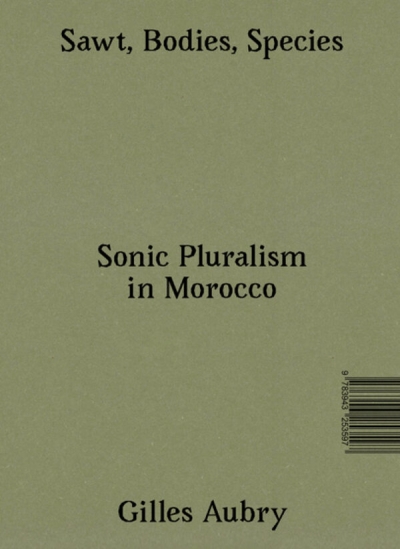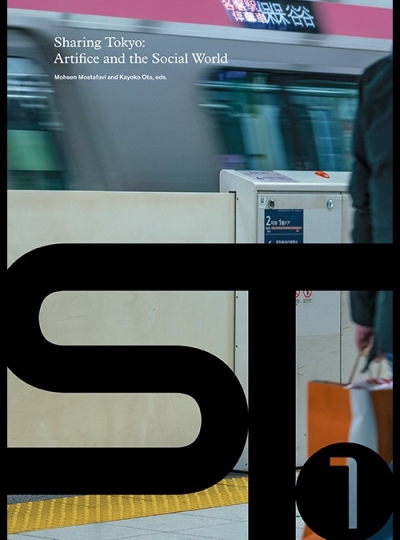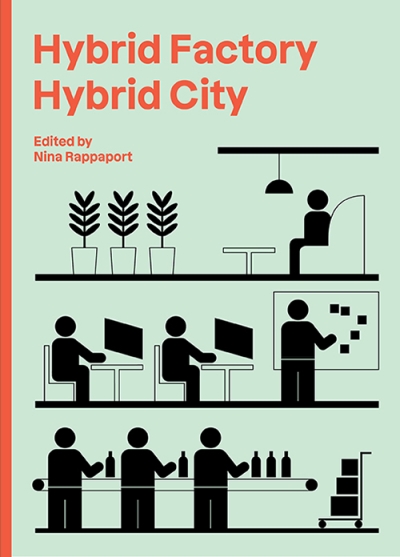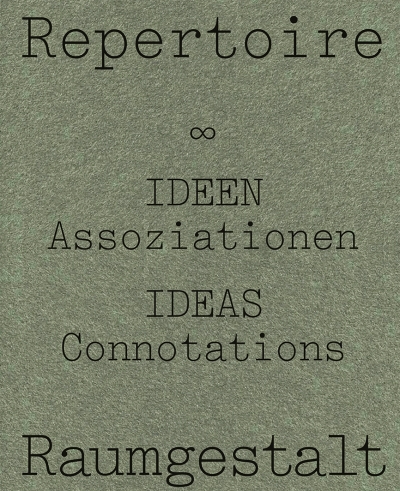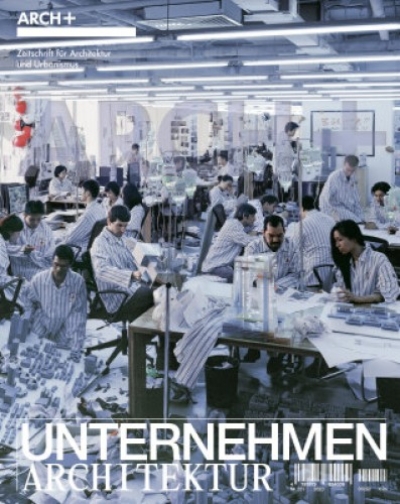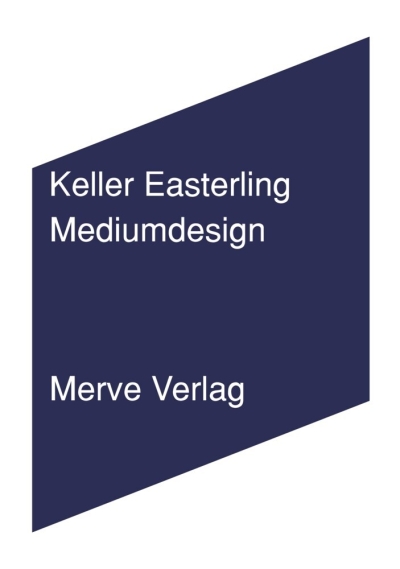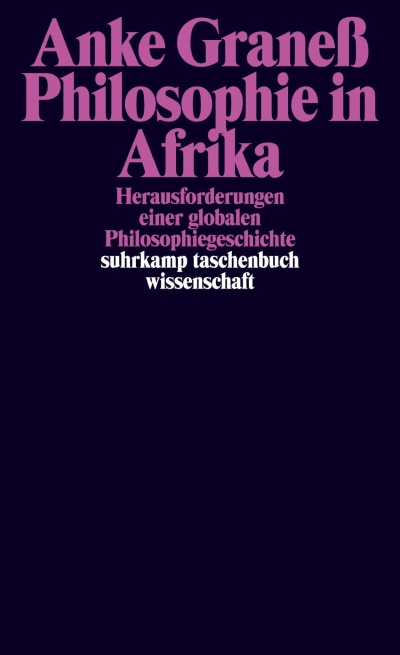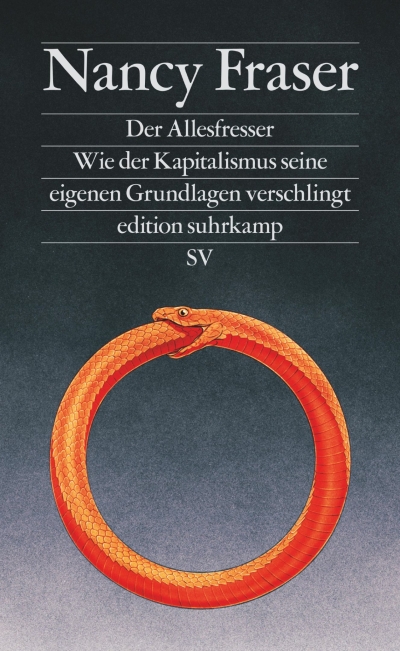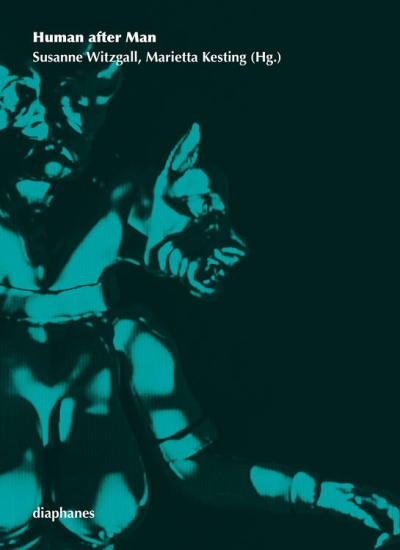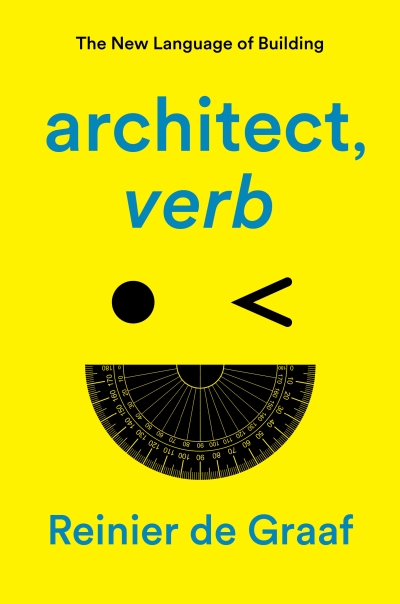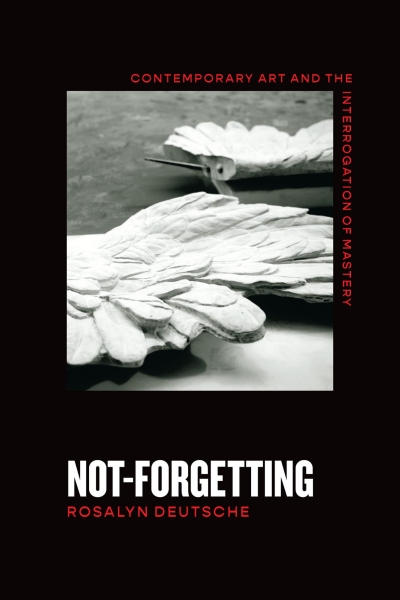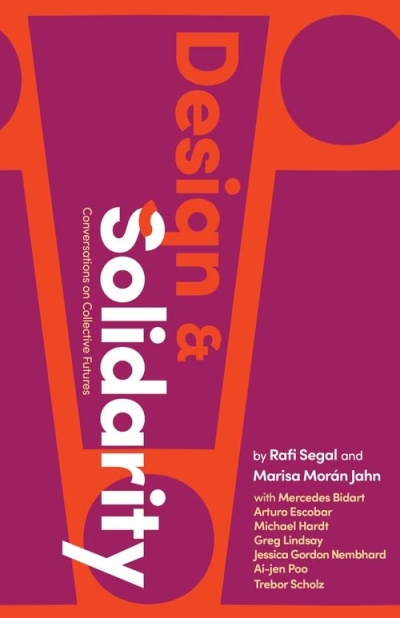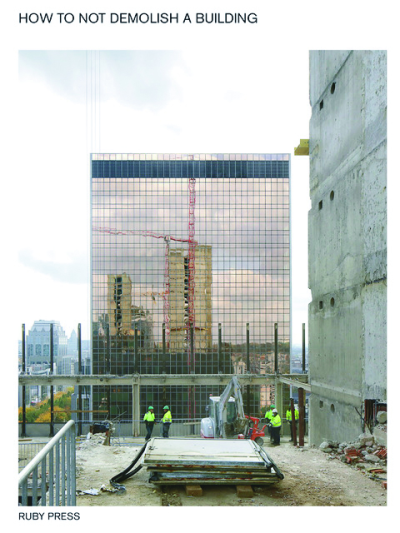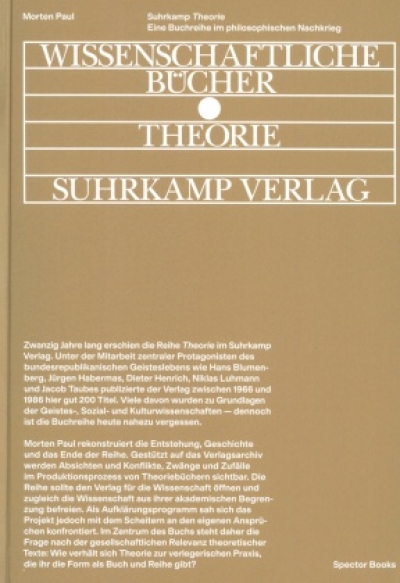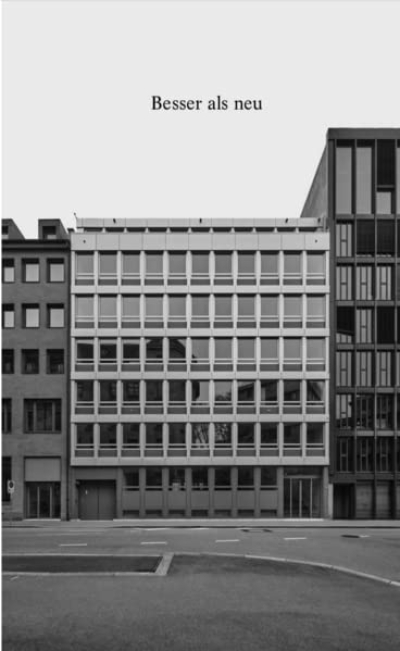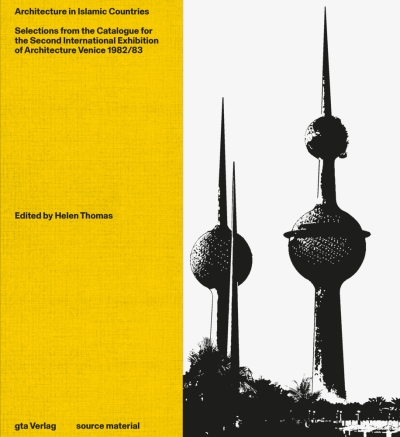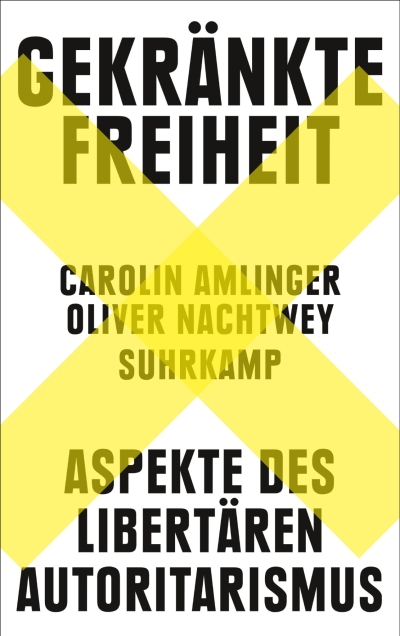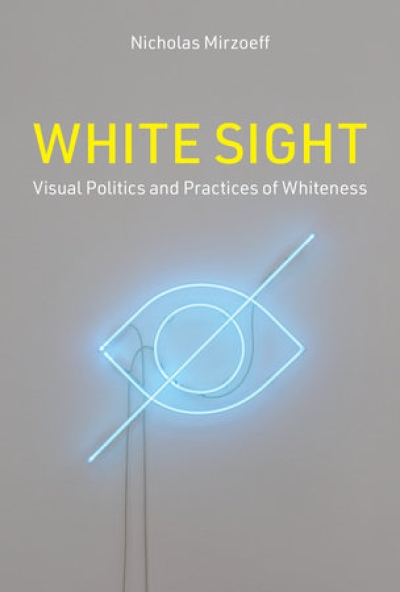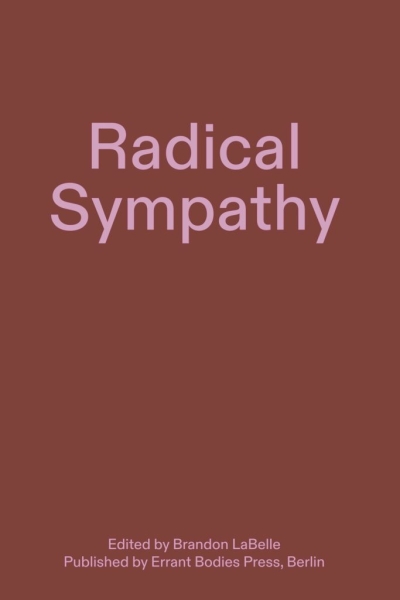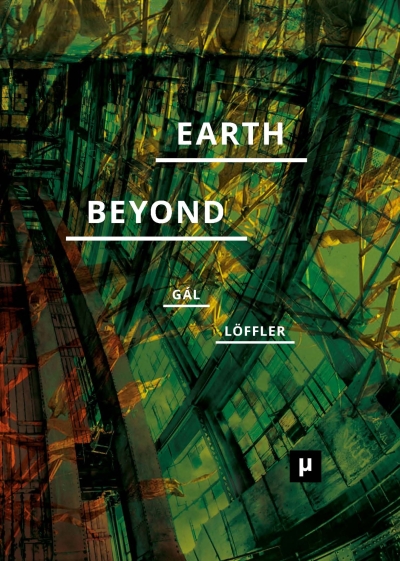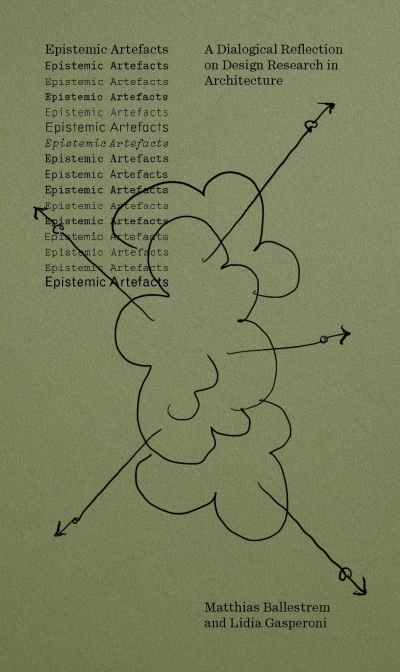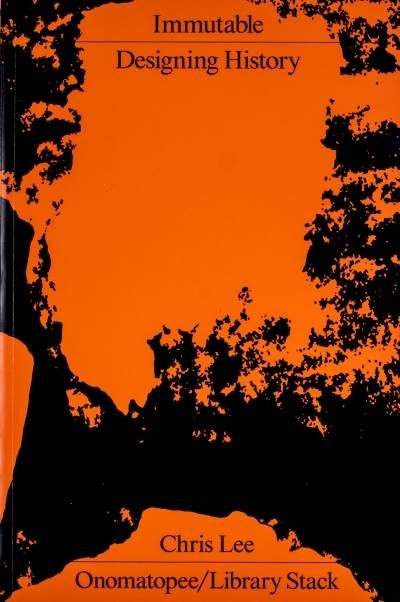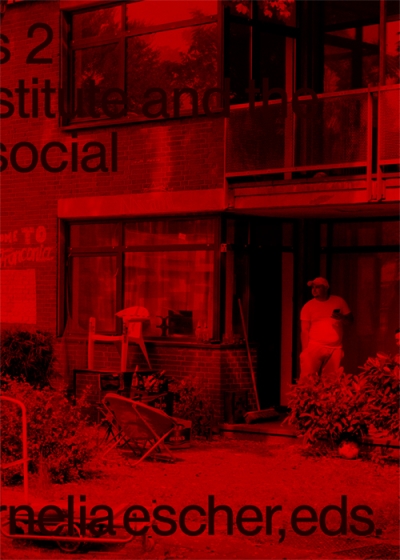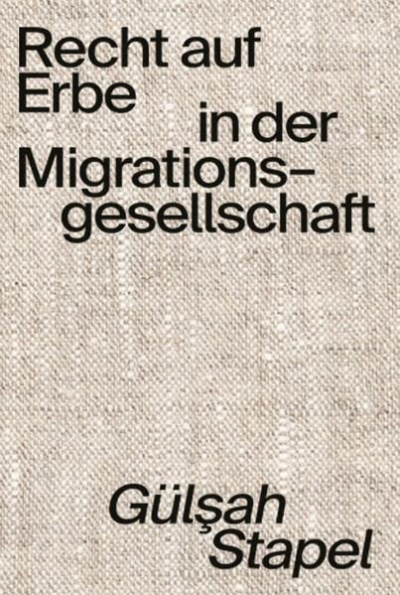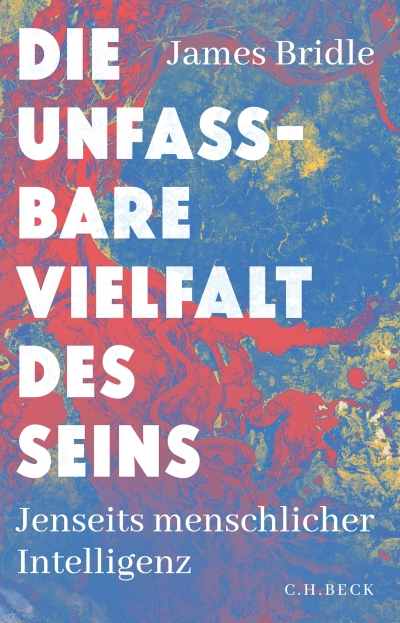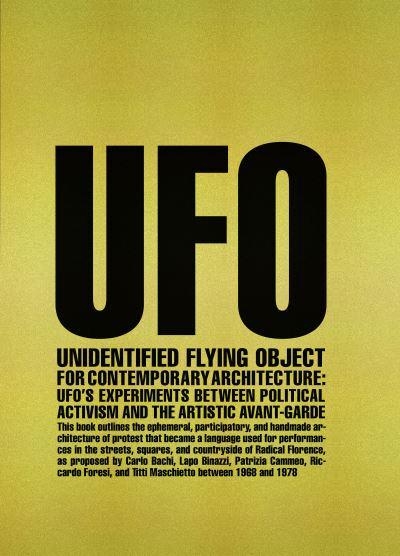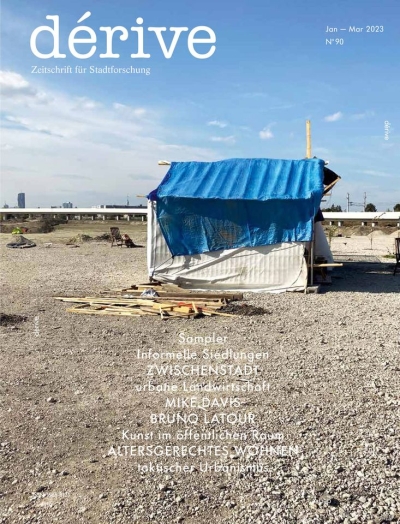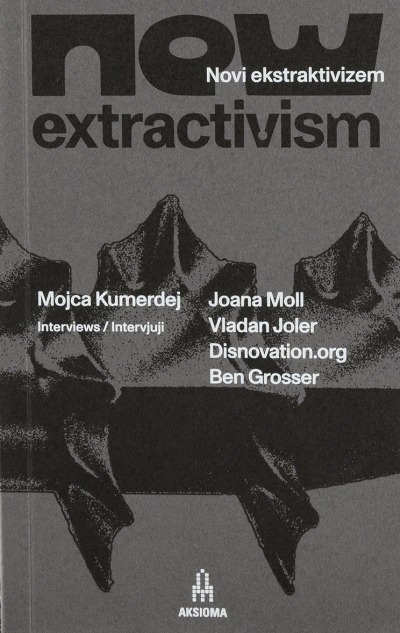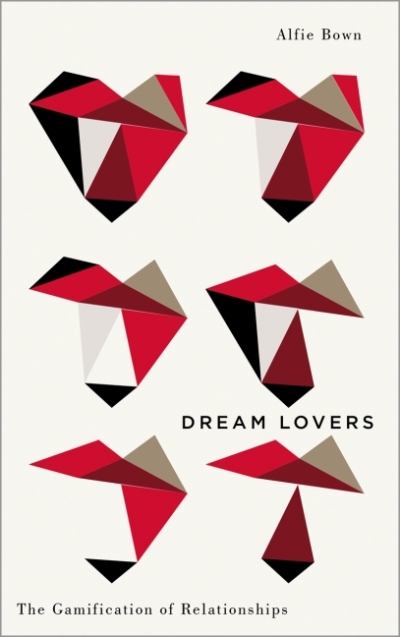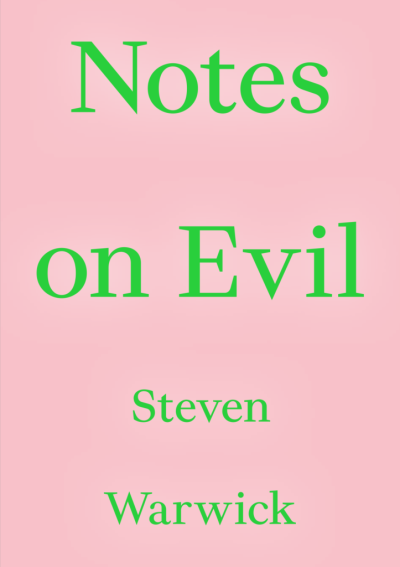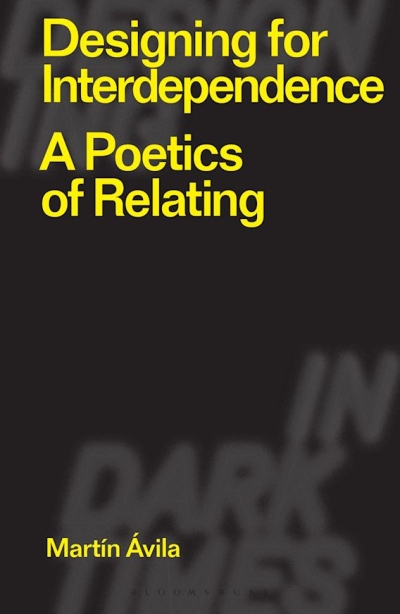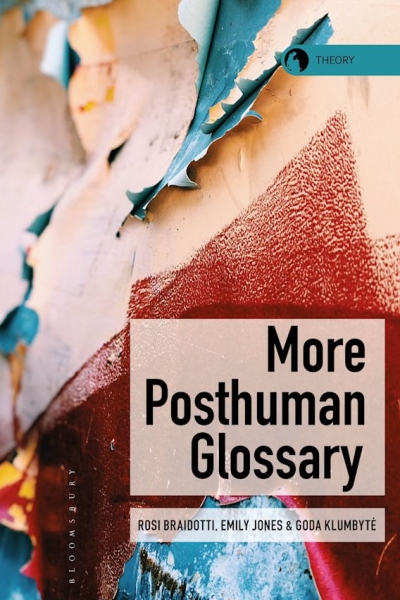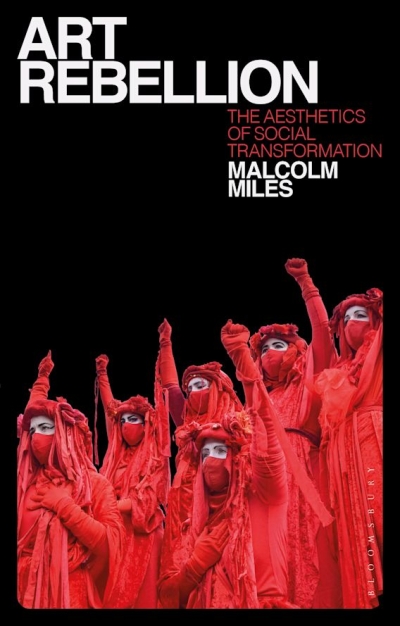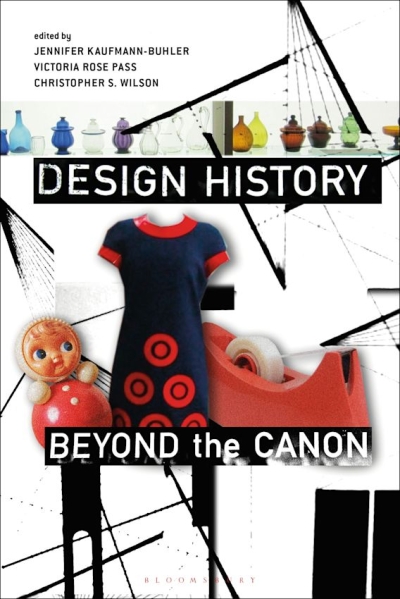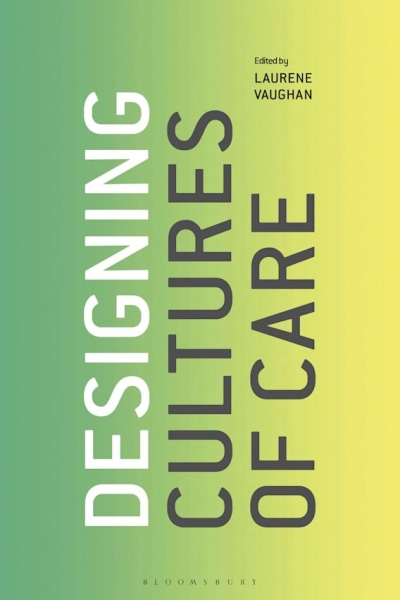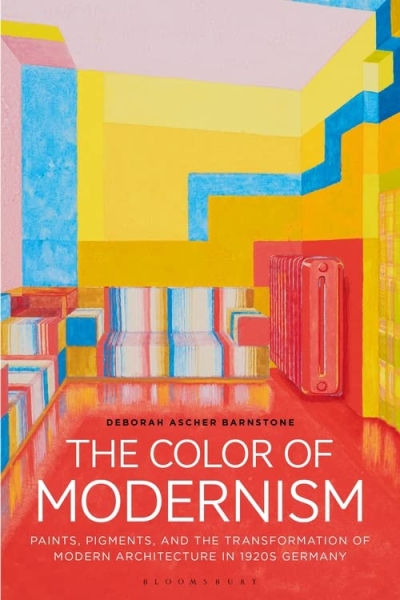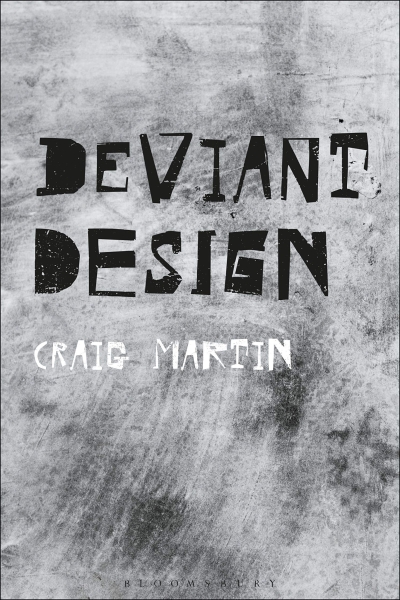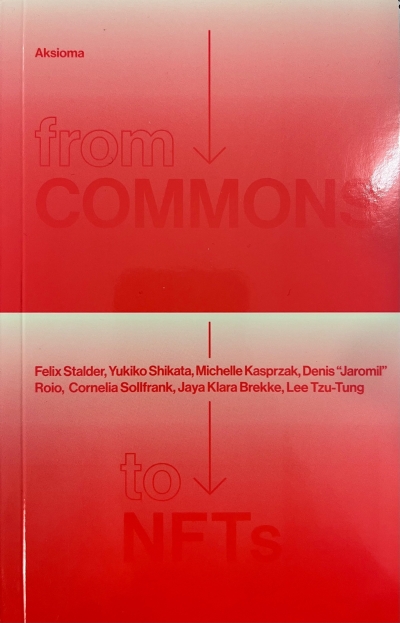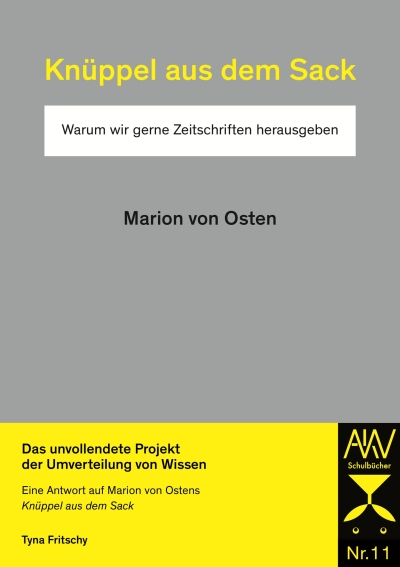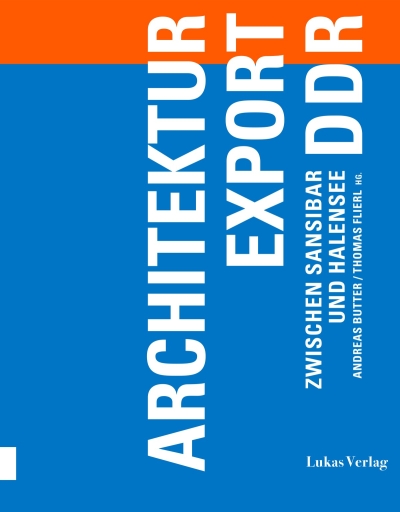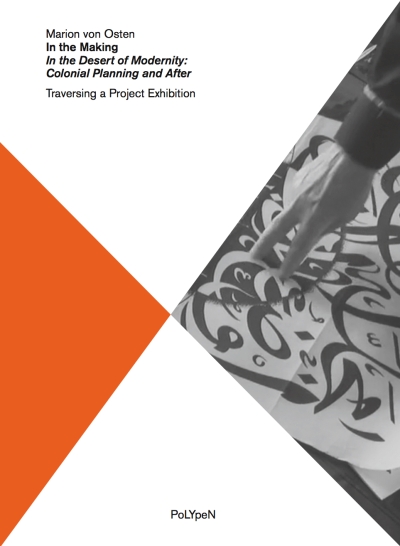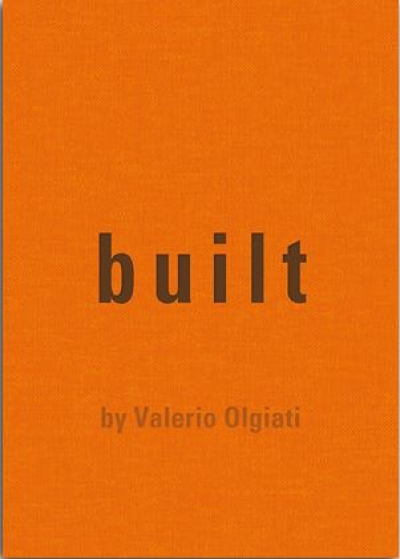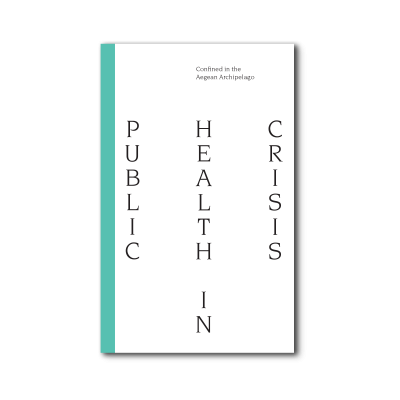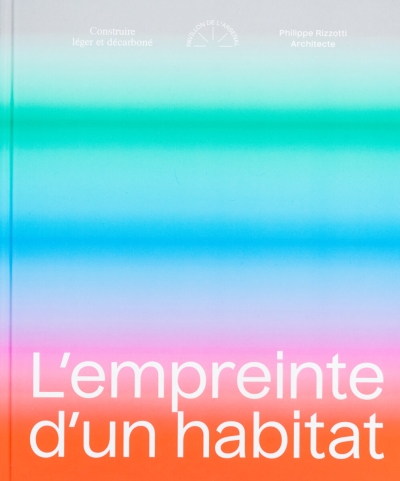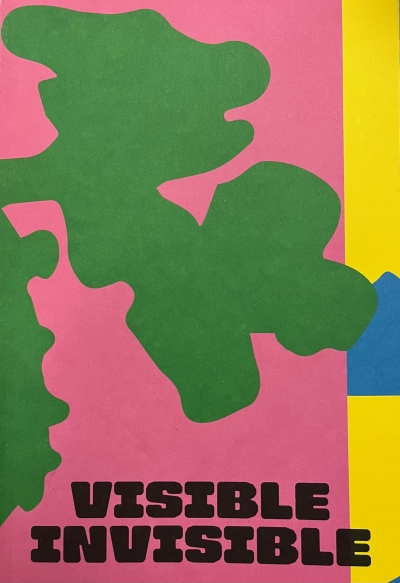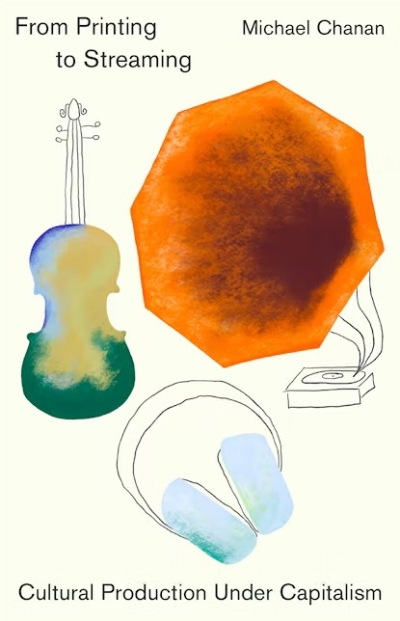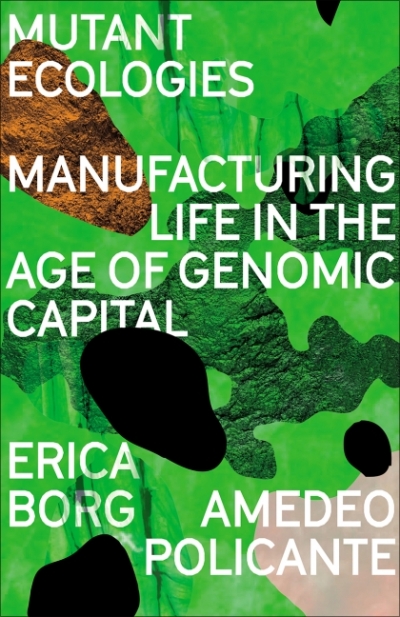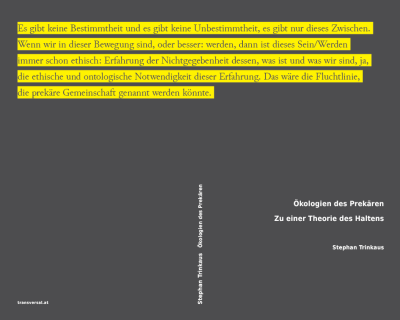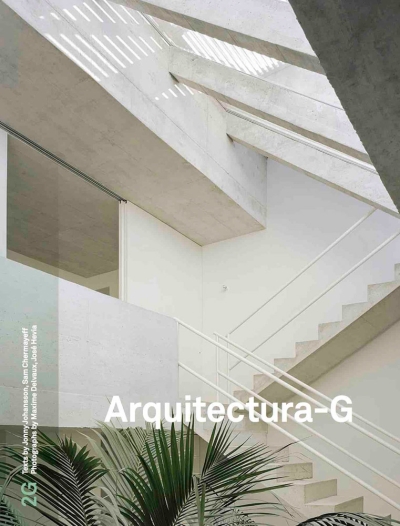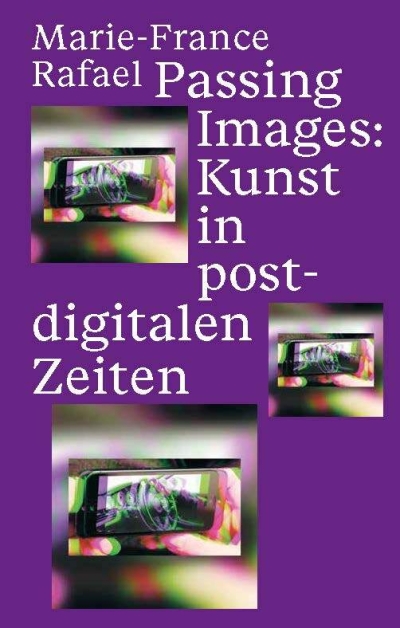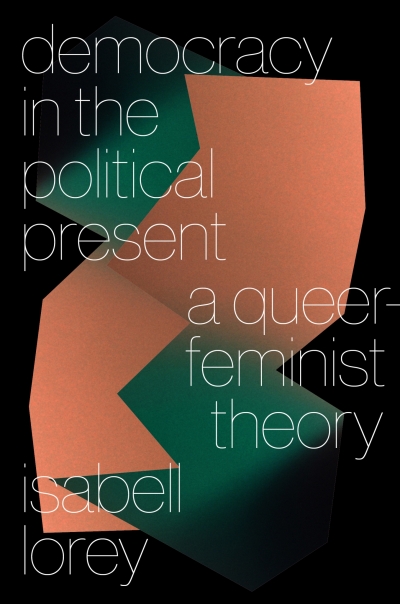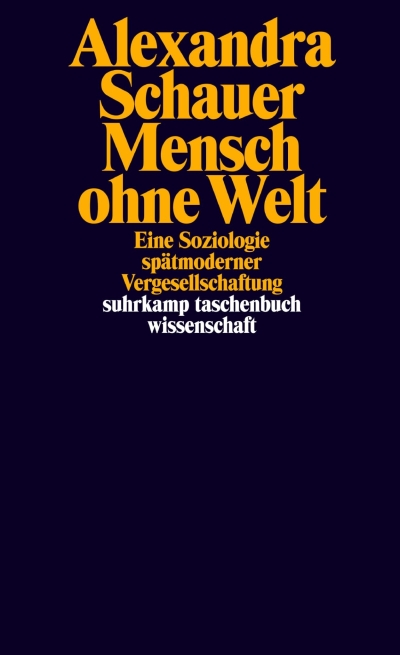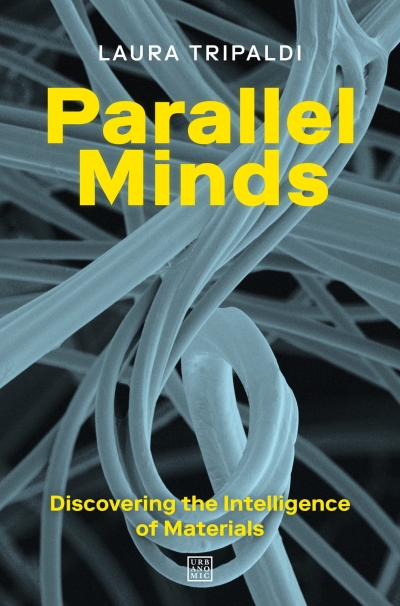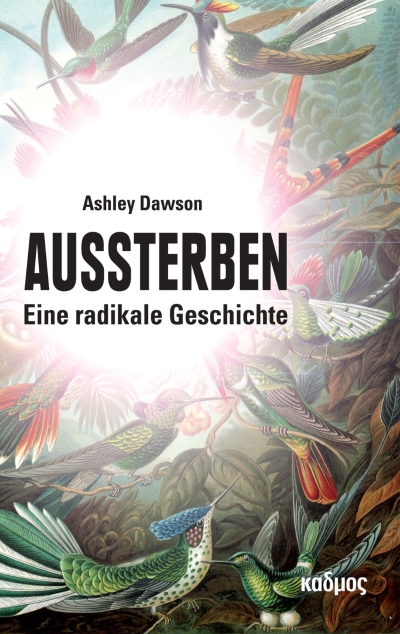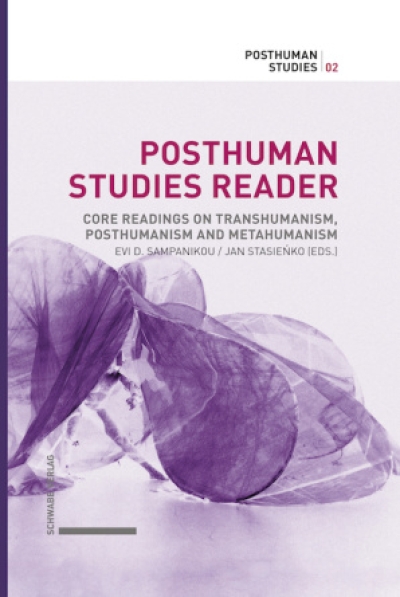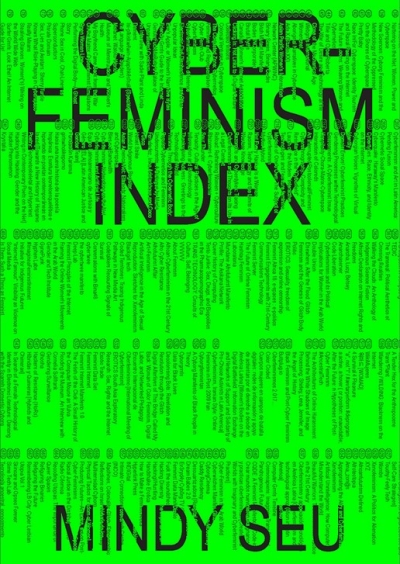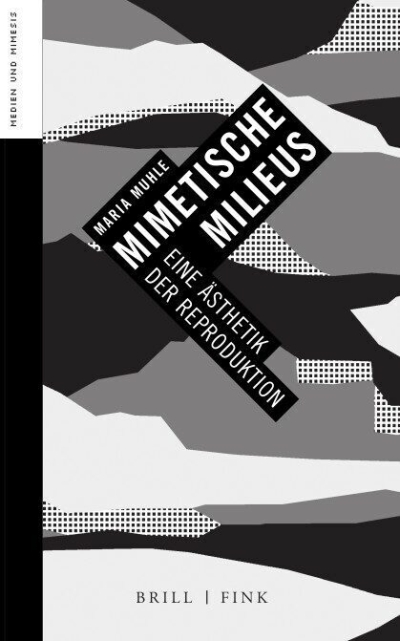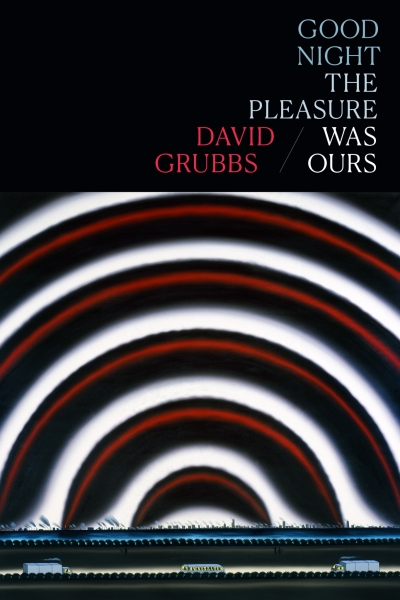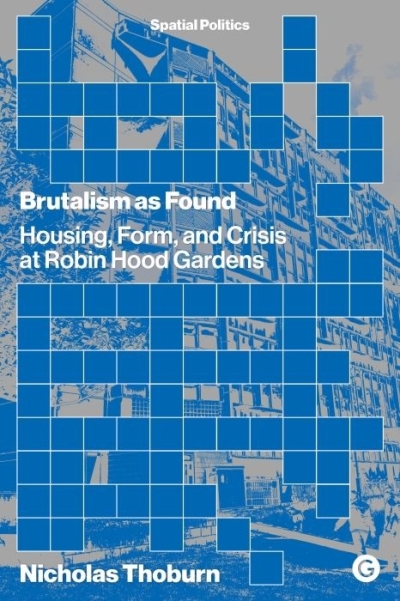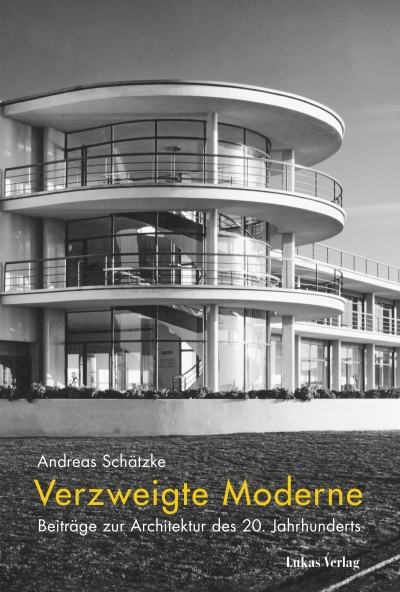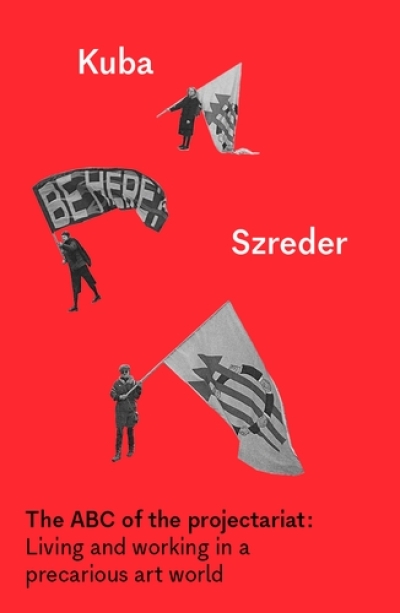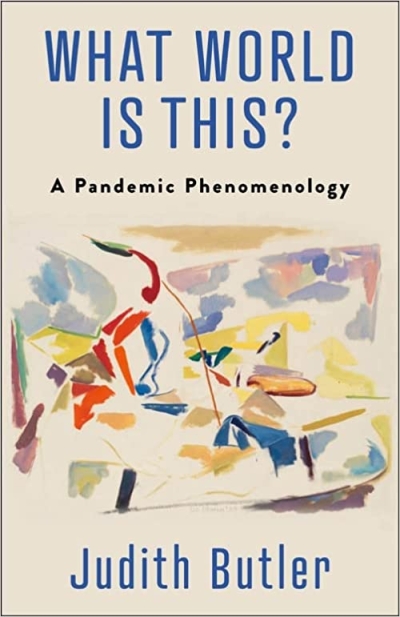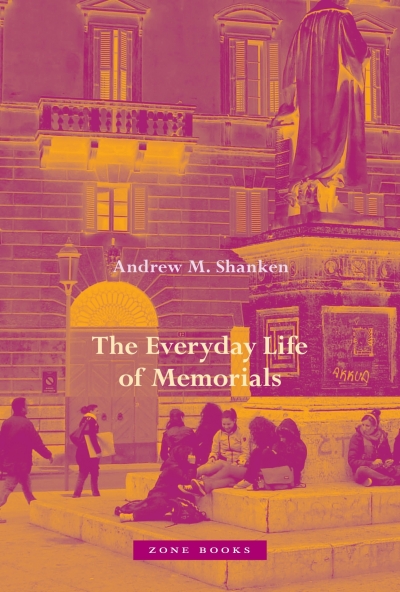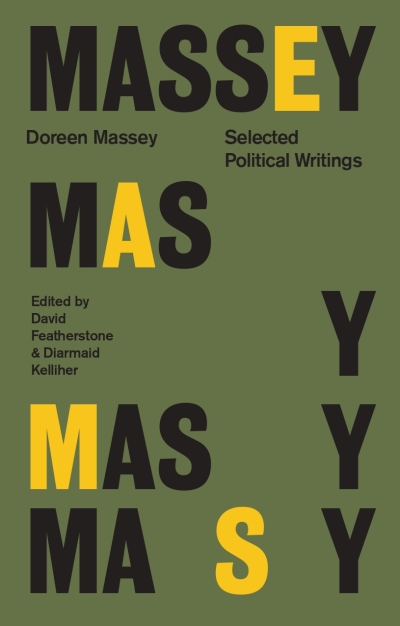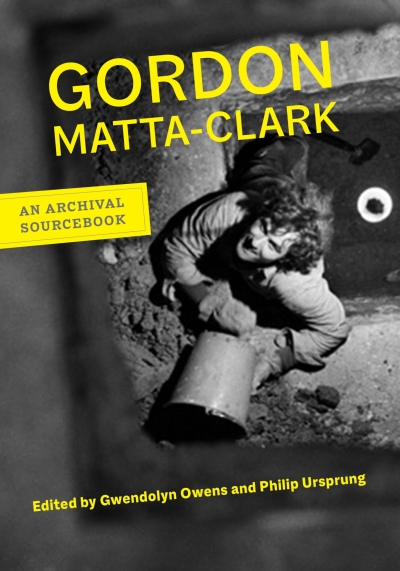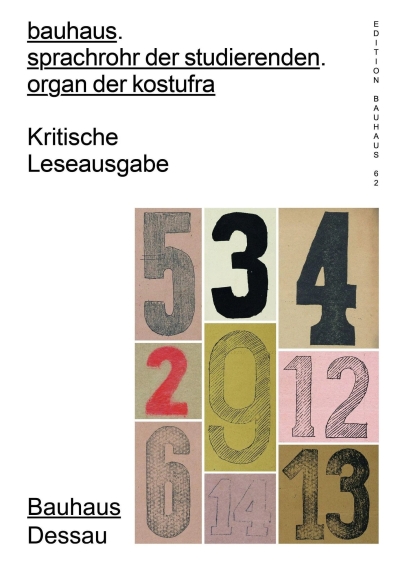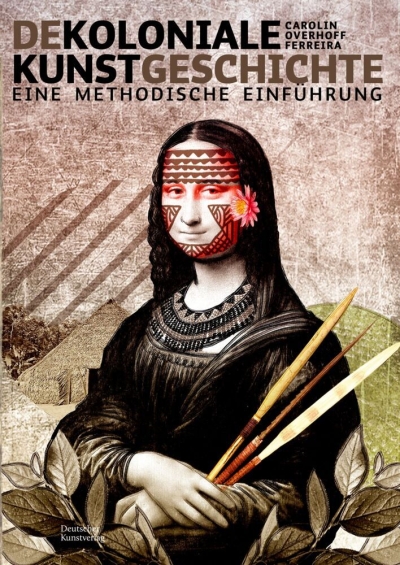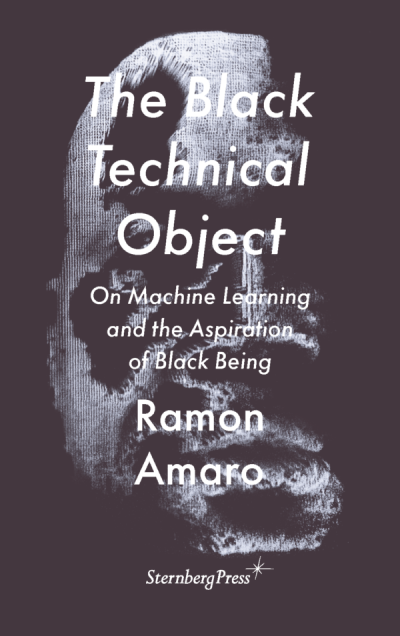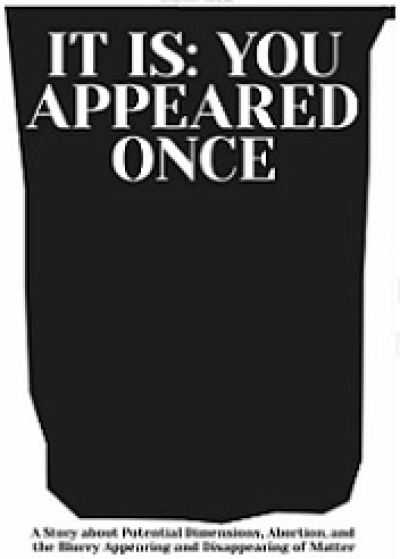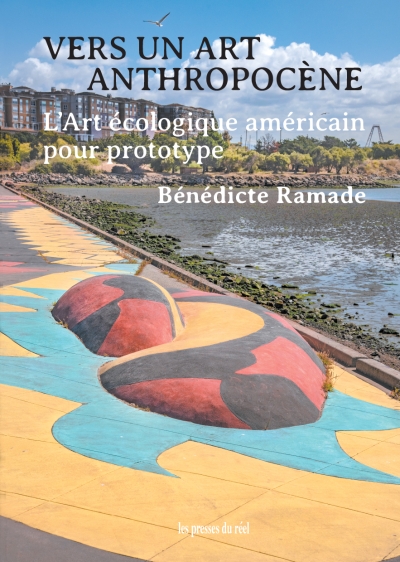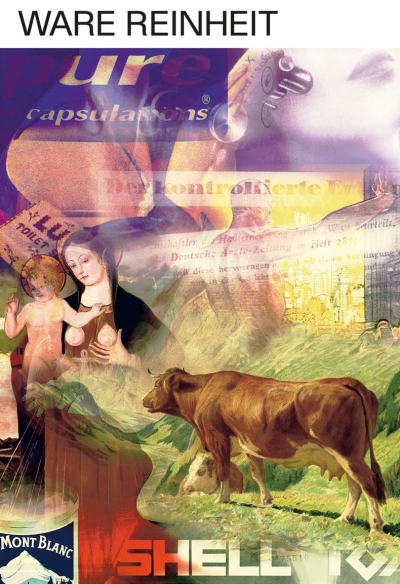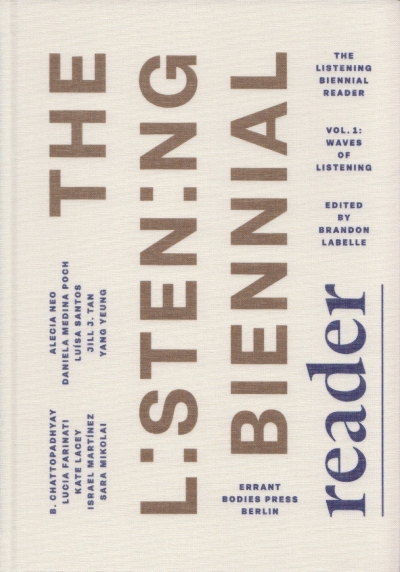Benedict Anderson
The City in Transgression. Human Mobility and Resistance in…
gerade nicht auf Lager
Vikramaditya Prakash, Maristella…
Rethinking Global Modernism. Architectural Historiography…
gerade nicht auf Lager
Bonaventure Soh Bejeng Ndikung
Pidginization as Curatorial Method. Messing with Languages…
gerade nicht auf Lager
Gabriele Gramelsberger
Philosophie des Digitalen zur Einführung
gerade nicht auf Lager
Susanne M. Winterling, Antonia Lotz (Ed…
Pandora's Box
Bonaventure Soh Bejeng Ndikung
An Ongoing-Offcoming Tale. Ruminations on Art, Culture,…
Counterprint (ed.)
Colour Clash. Vibrant Colour Palettes in Graphic Design
gerade nicht auf Lager
T. J. Demos
Radical Futurisms. Ecologies of Collapse, Chronopolitics,…
Vera Tollmann
Sicht von oben. „Powers of Ten” und Bildpolitiken der…
gerade nicht auf Lager
Ana Hupe
Footnotes to Triangular Cartographies. Processing Process
IDEA Magazine
IDEA 401. Wayfinding for City Spaces: Bridging navigation…
David Bergé, Milica Ivic (Eds.)
Bodies of Extraction. Underneath the Ground of Islands
gerade nicht auf Lager
Jan Büchsenschuß
Die Fassade. Verkleidung und Illusion, Verbrechen und Zitat
gerade nicht auf Lager
Francesco Fusaro (Ed.)
Sonic Traces. From Italy
Ulrich Gutmair
Wir sind die Türken von morgen. Neue Welle, neues…
gerade nicht auf Lager
Jumping He (Ed.)
Another Reading. Contemporary Book Design from China
gerade nicht auf Lager
James Voorhies
Postsensual Aesthetics. On the Logic of the Curatorial
Arvanitis, Blank, Michaelidi,…
Krisenkunst - Kunstkrise? Kunst und die globale Umweltkrise…
gerade nicht auf Lager
Pier Paolo Tamburelli
Grundkurs: What is Architecture About?
gerade nicht auf Lager
Oliver Marchart
Hegemony Machine. documentaX to fifteen and the Politics of…
Adolf Loos
Adolf Loos. Ins Leere gesprochen
gerade nicht auf Lager
Gilles Aubry
Sawt, Bodies, Species. Sonic Pluralism in Morocco
Mohsen Mostafavi, Kayoko Ota (eds.)
Sharing Tokyo. Artifice and the Social World
Nina Rappaport
Hybrid Factory, Hybrid City
gerade nicht auf Lager
Oda Pälmke
Repertoire 8, Ideen / Assoziationen, Oda Pälmke
Arch+ Zeitschrift für Architektur und…
Arch+ 251. Unternehmen Architektur
gerade nicht auf Lager
Keller Easterling
Mediumdesign
Anke Graneß
Philosophie in Afrika. Herausforderungen einer globalen…
gerade nicht auf Lager
Nancy Fraser
Der Allesfresser. Wie der Kapitalismus seine eigenen…
Susanne Witzgall, Marietta Kesting (Hg.)
Human after Man
gerade nicht auf Lager
Reinier de Graaf
architect, verb. The New Language of Building
gerade nicht auf Lager
Rosalyn Deutsche
Not-Forgetting. Contemporary Art and the Interrogation of…
gerade nicht auf Lager
Rafi Segal, Marisa Morán Jahn
Design & Solidarity. Conversations on Collective…
gerade nicht auf Lager
51N4E (Hg.)
How to not demolish a Building
gerade nicht auf Lager
Morten Paul
Suhrkamp Theorie. Eine Buchreihe im philosophischen…
gerade nicht auf Lager
David Vaner, Ilka Ruby (Hg.)
Besser als neu
Helen Thomas (Ed.)
Architecture in Islamic Countries. Selections from the…
gerade nicht auf Lager
Carolin Amlinger, Oliver Nachtwey
Gekränkte Freiheit. Aspekte des libertären Autoritarismus
gerade nicht auf Lager
Nicholas Mirzoeff
White Sight. Visual Politics and Practices of Whiteness
gerade nicht auf Lager
Brandon LaBelle (Ed.)
Radical Sympathy
Réka Patrícia Gál, Petra Löffler
Earth and Beyond in Tumultuous Times. A Critical Atlas of…
gerade nicht auf Lager
Matthias Ballestrem and Lidia Gasperoni…
Epistemic Artefacts. A Dialogical Reflection on Design…
gerade nicht auf Lager
Chris Lee
Immutable. Designing History
common room, Cornelia Escher
Negotiating Ungers 2 - The Oberhausen Institute and the…
gerade nicht auf Lager
Gülşah Stapel
Recht auf Erbe in der Migrationsgesellschaft
gerade nicht auf Lager
James Bridle
Die unfassbare Vielfalt des Seins
Beatrice Lampariello, Andrea Anselmo,…
UFO. Unidentified Flying Object for Contemporary…
dérive
dérive N° 90, Sampler (Jan-Mar/2023)
gerade nicht auf Lager
Mojca Kumerdej (Ed.)
New Extractivism
gerade nicht auf Lager
Alfie Bown
Dream Lovers. The Gamification of Relationships
Steven Warwick
Notes on Evil. Steven Warwick
Martín Ávila
Designing for Interdependence. A Poetics of Relating
gerade nicht auf Lager
Rosi Braidotti, Emily Jones, Goda…
More Posthuman Glossary
gerade nicht auf Lager
Malcolm Miles
Art Rebellion. The Aesthetics of Social Transformation
gerade nicht auf Lager
Jennifer Kaufmann-Buhler, Victoria…
Design History Beyond the Canon
gerade nicht auf Lager
Laurene Vaughan
Designing Cultures of Care
gerade nicht auf Lager
Deborah Ascher Barnstone
The Color of Modernism. Paints, Pigments, and the…
Craig Martin
Deviant Design. The Ad Hoc, the Illicit, the Controversial
Felix Stalder, Janez Fakin Jansa (eds)
From Commons to NFTs
Marion von Osten, Tyna Fritschy
Marion von Osten: Knüppel aus dem Sack. Tyna Fritschy: Das…
Andreas Butter, Thomas Flierl (Hg.)
Architekturexport DDR. Zwischen Sansibar und Halensee
gerade nicht auf Lager
Sabeth Buchmann, Susanne Leeb, Peter…
Marion von Osten. In the Making: "In the Desert of…
Valerio Olgiati
Built
Junius Frey, Yuk Hui
Kosmotechnik und Kommunismus
Birgit Schneider
Der Anfang einer neuen Welt. Wie wir den Klimawandel…
Dimitra Kondylatou, David Bergé (Eds.)
Public Health in Crisis. Confined in the Aegean Archipelago
Redaktion Protocol
Protocol 13. Adrenalin
gerade nicht auf Lager
Pavillion de Arsenal, Paris
L'Empreinte de l'habitat / Housing Footprint
gerade nicht auf Lager
Nicolas Dorval Bory, Guillaume Ramillien
Visible, Invisible
gerade nicht auf Lager
Michael Chanan
From Printing to Streaming. Cultural Production under…
gerade nicht auf Lager
Erica Borg, Amedeo Policante
Mutant Ecologies. Manufacturing Life in the Age of Genomic…
Deborah Fehlmann, Astrid Staufer (Hg.)
Wohnen im Einklang. Strategien zum Bauen im Lärm auf…
Stephan Trinkaus
Ökologien des Prekären. Zu einer Theorie des Haltens
Edited by Moises Puente. Introduction…
2G 86. Arquitectura-G
gerade nicht auf Lager
Marie-France Rafael
Passing Images. Kunst in post-digitalen Zeiten
Isabell Lorey
Democracy in the Political Present. A Queer-Feminist Theory
gerade nicht auf Lager
Alexandra Schauer
Mensch ohne Welt. Eine Soziologie spätmoderner…
gerade nicht auf Lager
Laura Tripaldi
Parallel Minds. Discovering the Intelligence of Materials
Ashley Dawson
Aussterben. Eine radikale Geschichte
Evi D. Sampanikou, Jan Stasienko (ed.)
Posthuman Studies Reader. Core Readings on Transhumanism,…
gerade nicht auf Lager
Mindy Seu (ed.)
Cyberfeminism Index
gerade nicht auf Lager
Maria Muhle
Mimetische Milieus. Eine Ästhetik der Reproduktion
gerade nicht auf Lager
David Grubbs
Good night the pleasure was ours.
Nicholas Thoburn
Brutalism as Found. Housing, Form, and Crisis at Robin Hood…
Andreas Schätzke
Verzweigte Moderne. Beiträge zur Architektur des 20.…
gerade nicht auf Lager
Kuba Szreder
The ABC of the projectariat
Judith Butler
What World Is This? A Pandemic Phenomenology
gerade nicht auf Lager
Andrew M. Shanken
The Everyday Life of Memorials
gerade nicht auf Lager
Doreen Massey (Eds.: David Featherstone…
Selected Political Writings
Gwendolyn Owens, Philip Ursprung (Eds.)
Gordon Matta-Clark. An Archival Sourcebook
Wolfgang Thöner, Karoline Lemke (Hg.)
Bauhaus. Sprachrohr der Studierenden. Organ der Kostufra.…
gerade nicht auf Lager
Carolin Overhoff Ferreira
Dekoloniale Kunstgeschichte. Eine methodische Einführung
Das Synagogen Projekt. Zum Wiederaufbau von Synagogen in…
gerade nicht auf Lager
Ramon Amaro
The Black Technical Object. On Machine Learning and the…
Magdalena Jadwiga Härtelova
It Is: You Appeared Once. A Story about Potential…
Bénédicte Ramade
Vers un art anthropocène
Cache
Ware Reinheit. Cache 02
gerade nicht auf Lager
Brandon Labelle (Hg)
The Listening Biennial Reader. Vol. 1: Waves of Listening
